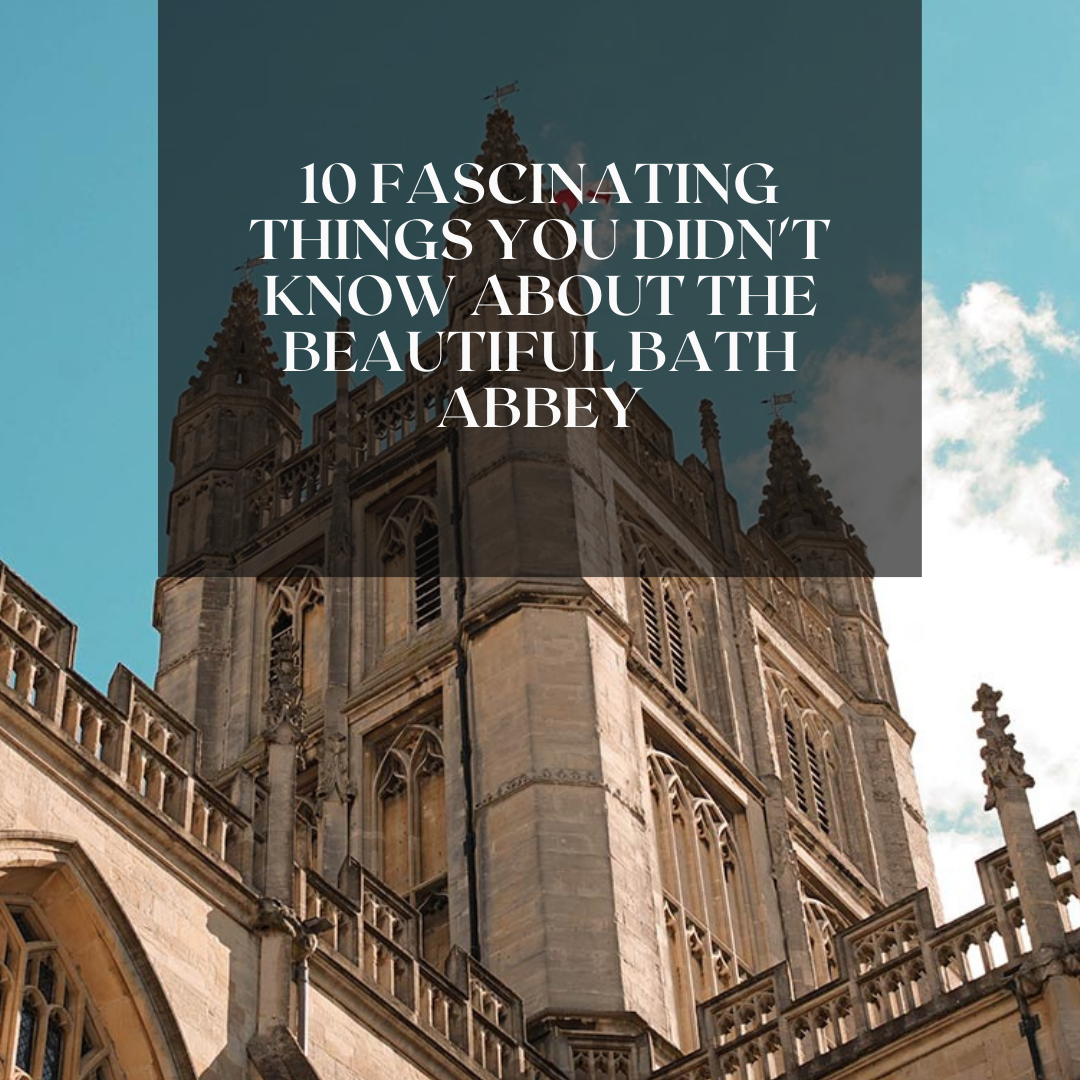
10 fascinating things you didn’t know about the beautiful Bath Abbey
3 October 2021After the Roman Baths, the magnificent Bath Abbey is the second most visited tourist attraction in Bath. It receives over half a million visitors a year, peaking in December when the Bath Christmas Markets are running.
If you’re planning to visit Bath to see its famous parish church, here are just a handful of the many fascinating facts about Bath Abbey you’ll be interested to know…
- The Abbey is the third church to stand on this site since 757 AD
This site has an extensive history, starting with an Anglo-Saxon monastery built around 757 AD. When the Normans invaded, a new enormous cathedral was built in 1090 AD. This was too big to maintain, so it fell into ruins. Building work on the Abbey church as we know it today was started in 1499.
- It took nearly 120 years to build
Bath Abbey may have been commissioned at the end of the 15th century, but it wasn’t completed finished until over a century later. Unfortunately, it was completed just in time for the dissolution of the monasteries by King Henry VIII, causing the Abbey to lay in disrepair for over 70 years. The restoration was only really finished in 1620, after Queen Elizabeth I sets up a national fund to finance the work.
- The Abbey hosted the coronation of England’s first king
One of the Abbey’s biggest moments came in 973, when the first king of all England – King Edgar – was crowned there. The service set the precedent for all English coronation ceremonies to come.
- There are around 8,000 bodies buried underneath the Abbey floor
No one knows for sure, but there are believed to be up to 8,000 bodies buried beneath the Abbey’s floors. The earliest is from 1569, while the last burial took place in 1845.
- The Abbey had a Victorian Gothic makeover in 1864
One of Bath Abbey’s most remarkable features, its stunning stone fan vaulted ceiling, isn’t original. It replaced the ancient wooden ceiling when the building was given a Victorian Gothic transformation by the architect Sir George Gilbert Scott.
- There’s a special Remembrance chapel within the Abbey
In 1919, the Gethsemane Chapel was created within the Abbey in memory of those who died in WWI.
- There was standing room only in the Abbey until the mid 19th century
Surprisingly for such a large space, pews were only installed in the Abbey in the mid 19th century. Before this, the congregation had to stand or lean on stone ledges around the walls.
- The clock is owned by the people of Bath
Located on the north side of the Abbey, the People’s Clock is so-called because it actually belongs to the people of Bath – rather than being owned by the Abbey.
- There are holes in the ceiling
Look closely at the Abbey’s fantastic fan-arched ceiling and you may spot a couple of tiny holes. No one knows exactly why they exist, but it’s rumoured that they were used by bell ringers to see when newlyweds were heading down the aisle – so they didn’t miss their cue to start the bells.
- The Abbey is heated by Bath’s natural hot water springs
In 2021, the Bath Abbey Footprint restoration project replaced the gas boilers which normally heat the building with heat exchangers, to make use of the city’s natural hot spring water from the nearby Roman drain. Alongside this eco-friendly heating innovation, the project also restored the Abbey floor back to its former glory.
To see the famous Bath Abbey for yourself, book a stay at one of our beautiful city centre properties nearby and make a weekend of it.




